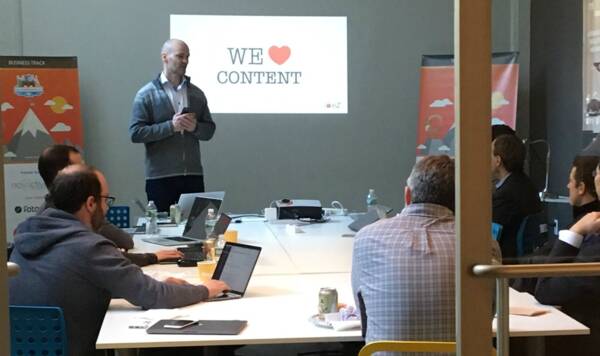If content is or needs to become a core part of your business, choosing a content management system (CMS) is critical. Here's a look at why some of our clients and partners chose eZ.

When you choose to build a website in eZ Publish or eZ Platform, you’re not just getting a super functional and long-lasting content management system, you’re also getting access to a community of developers who work together to ensure you’ll get the best possible solutions and service over the long term.

If you landed here because you’re researching a content management system, then you already know there are literally thousands to choose from. Some you’re probably familiar with, but most you likely haven’t heard of. Narrowing down a shortlist can be overwhelming.
But if content is key to your business, you’ll want to choose a system that makes dealing with lots of content -- and leveraging it throughout your site and across other channels -- easy and intuitive.

I recently had a lucky moment and was saved by a happy combination of things, including Assembla, eep, and a couple bits of dev-ops.
The eZ Tags extension by Netgen is a great solution to the problems of managing large or ad hoc taxonomies. It especially solves problems around editorial user experience.
Recently, Mugo has added a bunch of improvements to the extension. This post talks about 2: allowing users to reorder tags by assigning priorities, and to select tags from a tree menu.
Open source communities rely very strongly on the community to advance the software in question. eZ Publish adds the "enterprise" part to "enterprise open source content management system" by not only targeting larger enterprises but by also adding a company vendor -- eZ Systems -- behind the software. This helps spur development forward on a consistent pace. However, there is still immense value in having the implementation partner companies contribute their code and insights. Contributing back might not be a natural thing for the partner companies to do; if you're such a partner company, here's why you should and how to do it.
On Thursday, October 25 at 9am PT / 12pm ET, the eZ Publish Americas community will be hosting two presentations: an introduction to eZ Publish 5 and Symfony; and a comparison between eZ Publish and Drupal. This is the second episode of a regular presentation series, and one of several initiatives of the community.
Recently, eZ Systems announced that the next major version of eZ Publish will use the Symfony framework. Having heard good things about Symfony as a modern, robust web framework, I am pretty excited at the announcement, and have already dived in to the new eZ Publish 5 code.
If you're relatively new to eZ Publish, you might know about siteaccesses, design, extensions, and overrides. You can build a basic extension, edit a template file, and write a simple full view override rule. However, you might have trouble putting this all together. You might struggle with whether to put your template in the "standard" design or a custom site design folder. You might be confused as to whether to put your template in the "override/templates" folder or the "templates" folder, and/or the overall template path in the first place. This article will take a step back for a high-level look at how eZ Publish loads extensions, particularly design extensions, as well as how to find out which templates are being used and how to properly override them.
Mugo Web is jointly hosting the first eZ Publish event of the year in North America with Granite Horizon. We are currently accepting talk proposals and training topic requests.
The open source content management system eZ Publish moved its code repository to GitHub near the end of 2010. Although eZ Publish's code base has been open source since its first version in 1999, before the move to GitHub, it was not an easy process for the community to contribute to the code. Mugo Web has enjoyed contributing to the eZ Publish code by making pull requests and hopes to make more in the future!